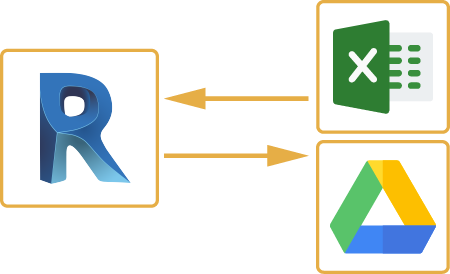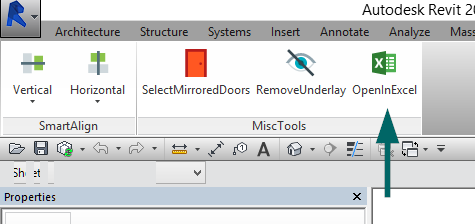Revit Tools for each Task: Your Ultimate Design Friend
Wiki Article
Revit Accelerator: Excel Integration Strategies for Enhancing Performance and Partnership
In this short article, we will explore the benefits of incorporating Excel right into your Revit workflows. Plus, we will certainly share best practices for flawlessly incorporating Excel into your Revit projects. Obtain prepared to supercharge your Revit experience with our Revit Accelerator: Excel Combination Techniques!Benefits of Excel Integration in Revit
The advantages of Excel combination in Revit are many and can significantly boost productivity and partnership. By effortlessly connecting these two powerful devices, you can simplify your workflow and save useful time. With Excel assimilation, you can easily import and export data in between Revit and Excel, permitting you to utilize the strengths of both programs.
One more advantage of Excel integration is the capability to produce vibrant timetables and records. By connecting your Revit version to an Excel spread sheet, any changes made in Revit will automatically update in the corresponding Excel documents. This makes it simple to create current timetables, quantity departures, and various other task documents.
Excel assimilation in Revit additionally makes it possible for far better cooperation amongst employee. With the capacity to import and export information, you can quickly share info with associates who may not have access to Revit. This advertises reliable interaction and enables for much better sychronisation and decision-making.
Improving Workflows With Revit and Excel
Improving workflows with Revit and Excel can significantly enhance efficiency and collaboration. By combining the capabilities of Revit and Excel, you can seamlessly move information between the two applications, eliminating the need for hand-operated information entrance and decreasing the risk of mistakes.
Making Use Of Revit and Excel with each other enables you to leverage the strengths of each program - revit add ins. You can export information from Revit right into Excel, where you can carry out complex calculations, develop charts and charts, and analyze the details in an extra reliable and organized fashion. On the various other hand, you can import data from Excel right into Revit, allowing you to quickly upgrade your designs and documentation based upon modifications made in Excel
The integration of Revit and Excel additionally promotes collaboration amongst employee. By sharing Excel data, you can easily collaborate and connect on style and construction-related data. This boosts coordination and ensures that everybody is collaborating with one of the most up-to-date info.
Taking Full Advantage Of Collaboration With Excel and Revit
To maximize partnership with Excel and Revit, you can seamlessly share and upgrade style and construction-related information with your team. By incorporating Excel import excel into revit with Revit, you can remove the requirement for hand-operated data entrance and lower the risk of mistakes. With simply a few clicks, you can import Excel spreadsheets right into your Revit model, enabling you to conveniently access and control the information. This integration enables you to work together extra efficiently with your team, as every person can function on the same data in real-time.Among the key benefits of using Excel in conjunction with Revit is the capability to update information in both programs all at once. Any kind of adjustments made in Excel will automatically be reflected in Revit, and vice versa. This guarantees that everybody is collaborating with the most updated info, preventing confusion and saving important time.
Additionally, Excel offers powerful devices for assessing and arranging information, which can considerably improve your partnership efforts. You can create customized reports and graphes in Excel, aiding you to envision and interact crucial job information effectively. This can be particularly useful when offering information to stakeholders or making notified decisions based upon task metrics.
Advanced Methods for Boosting Performance in Revit Utilizing Excel
By making use of sophisticated strategies in Revit, you can substantially increase your efficiency by leveraging the power of Excel. With Revit's Excel assimilation feature, you can connect Excel spreadsheets directly to your Revit version, allowing you to quickly take care of and update data.
Additionally, you can utilize Excel macros to automate recurring jobs in Revit (revit tools). Macros permit you to record a series of actions and play them back with a solitary click, conserving you effort and time. For example, you can produce a macro to instantly create room routines or update criterion worths wholesale.
Best Practices for Excel Integration in Revit
Utilizing Excel as an information administration device in Revit enables reliable monitoring and updating of data. By integrating Excel into your Revit workflow, you can streamline your processes and improve productivity. One of the best practices for Excel integration in Revit is to create a clear and organized data structure. This means designing your Excel spreadsheets with columns and rows that straighten with the criteria and groups in your Revit task. By doing so, you can conveniently import and export data between Revit and Excel with no confusion. An additional ideal technique is to utilize formulas and functions in Excel to automate calculations and information adjustment. This can conserve you time and make sure accuracy in your information administration. Additionally, it is very important to on a regular basis update your Excel spread sheets and sync them with your Revit task. This means, any modifications made in Revit will be reflected in your Excel documents, and the other way around. By complying with these finest practices, you can properly make use of Excel as a data management device in Revit and improve your productivity and collaboration.Final Thought
In verdict, incorporating Excel with Revit can greatly enhance productivity and collaboration in the style process. By leveraging the power of Excel, Revit individuals can accomplish higher levels of productivity and partnership in their jobs.With Excel combination, you can quickly import and export data between Revit and Excel, allowing you to leverage the strengths of both programs.
One of the key advantages of Excel assimilation is the capacity to make use of Excel solutions and features within Revit. By linking your Revit model to an Excel spreadsheet, any kind of adjustments made in Revit will automatically upgrade in the equivalent Excel documents. On the various other hand, you can import data from Excel into Revit, allowing you to promptly upgrade your designs and documentation based on changes made in Excel.
With Revit's Excel assimilation attribute, you can link Excel spreadsheets straight to your Revit version, permitting you to easily take care of and upgrade data.
Report this wiki page